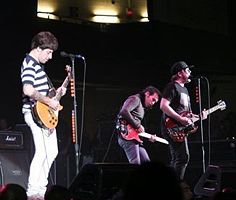Piano Sheets > Fall Out Boy Sheet Music > Thnks Fr Th Mmrs (ver. 1) Piano Sheet
Thnks Fr Th Mmrs (ver. 1) by Fall Out Boy - Piano Sheets and Free Sheet Music

About the Song
"Thnks fr th Mmrs" (pronounced "thanks for the memories") is the third 2007 single released by the Chicago band Fall Out Boy. It is featured on their 2007 release Infinity on High. The song, according to bassist Pete Wentz in an interview with Kerrang!, refers to a romantic relationship in which the initial sentiments have perished, but both lovers continue to "sleep with each other" to appease their physical and mental desires. The title, "Thnks fr th Mmrs" is the words "thanks for the memories" after having been disemvowelled, much like it would be written as part of a text message. Another reason for the song title's lack of vowels comes as joking nod at Fall Out Boy's record company, who have asked them to shorten their often verbose song titles. Fall Out Boy is an American pop punk band from Wilmette, Illinois (a suburb of Chicago), that formed in 2001. The band consists of Patrick Stump.
Download this sheet!
About the Artist

Random article
Advantages of accessing free sheet music online The internet has pervaded all aspects of our lives and when it comes to learning how to play piano this is no different. There are virtually hundreds of websites, which offer you free sheet music to help you learn how to play the piano. There are several advantages to getting online sheet music versus conventional hard copy versions.
No storage issues
One of the biggest advantages is that online sheet music does not occupy physical space as documents do. This helps you avoid unnecessary clutter
(More...)
